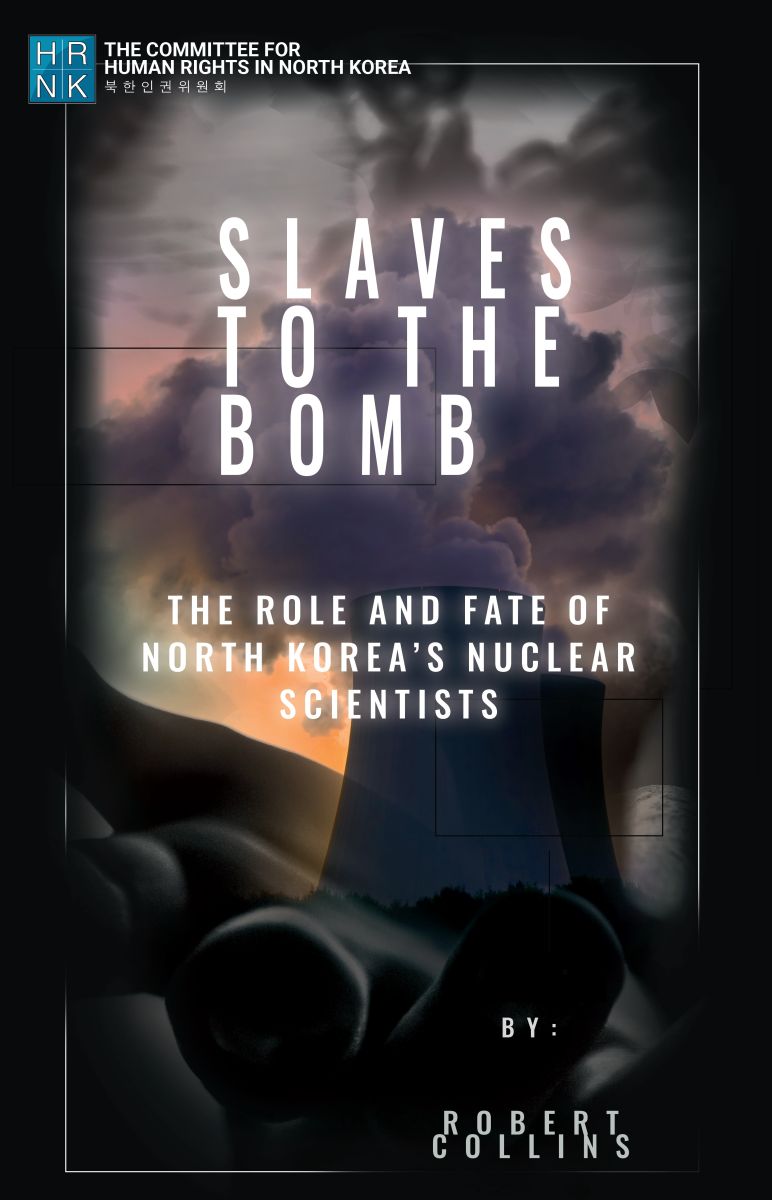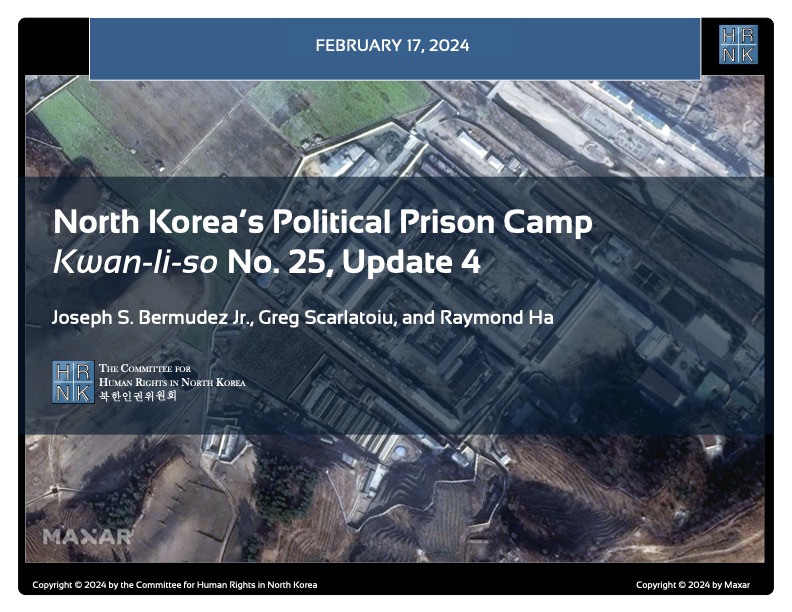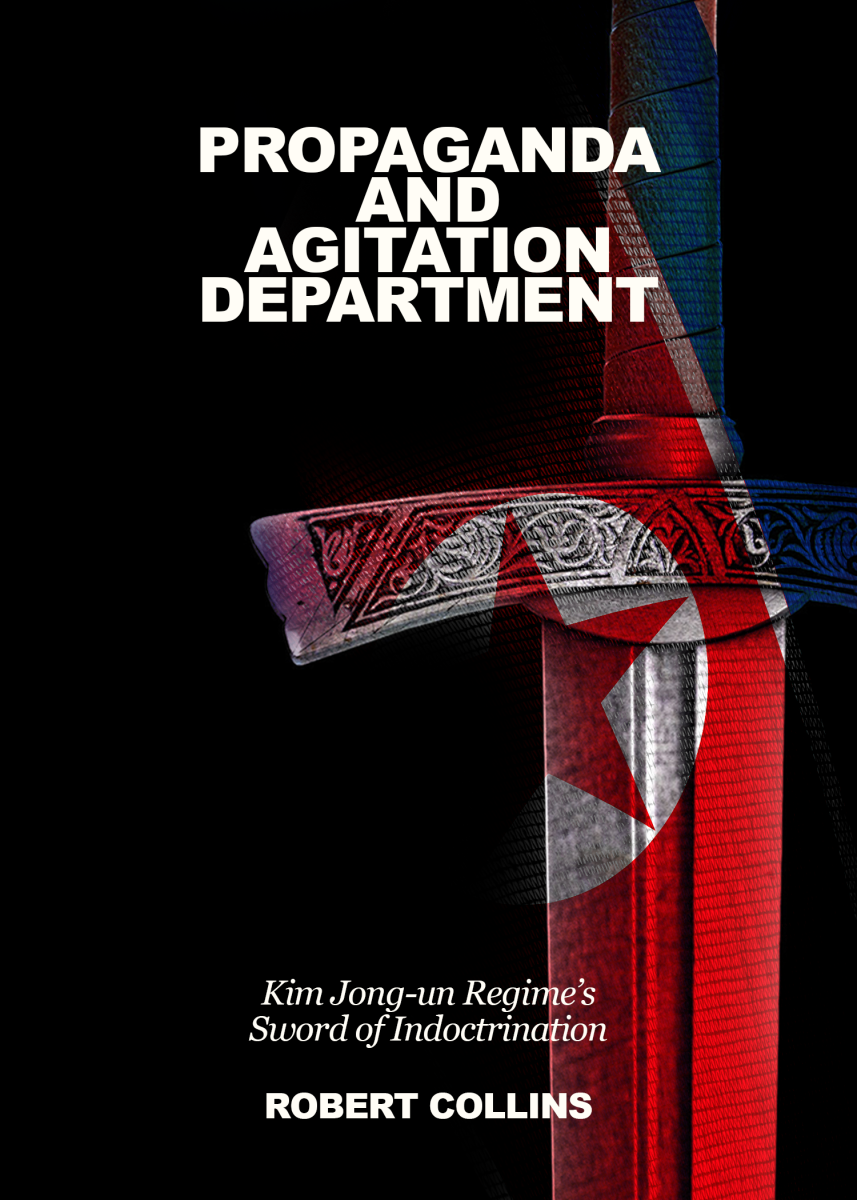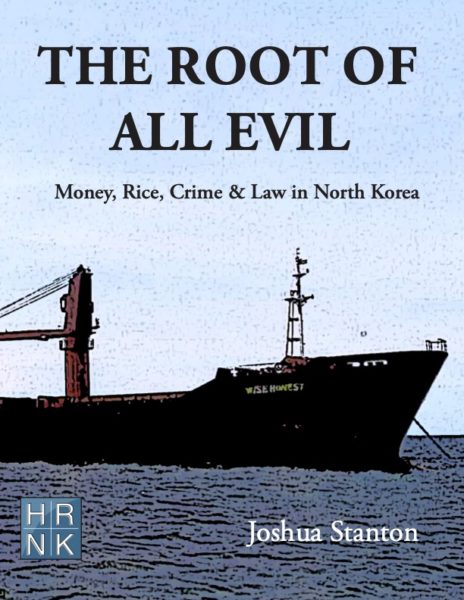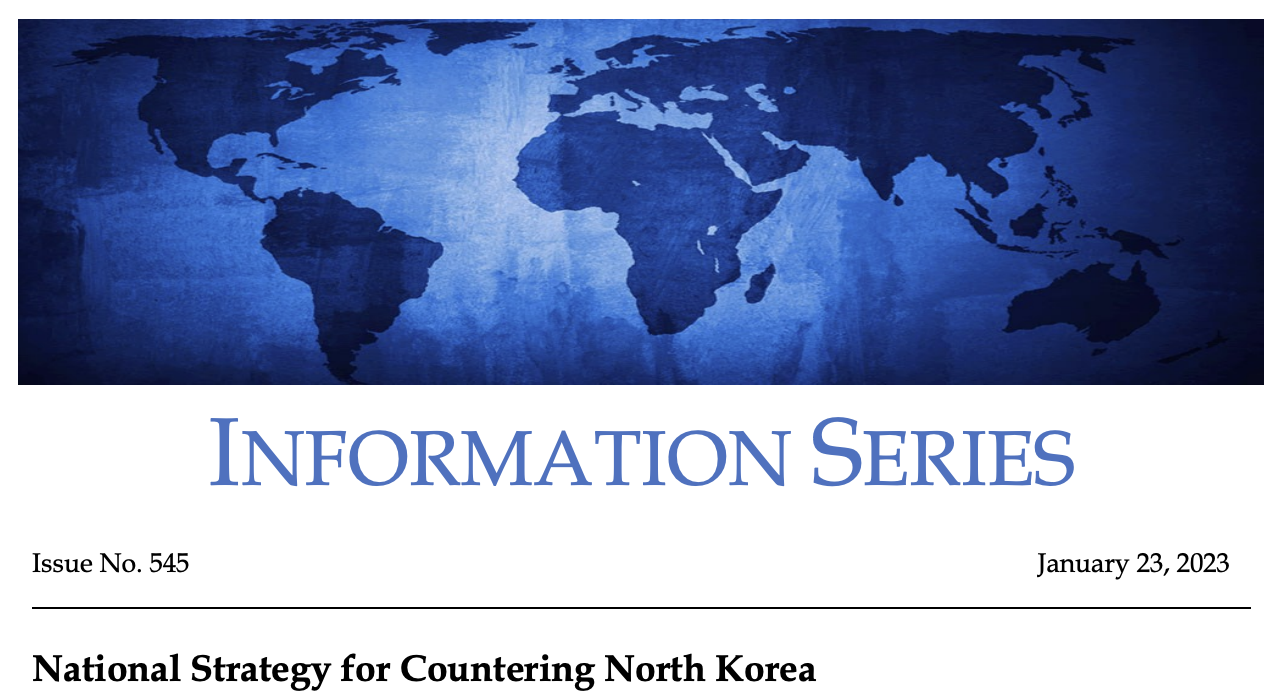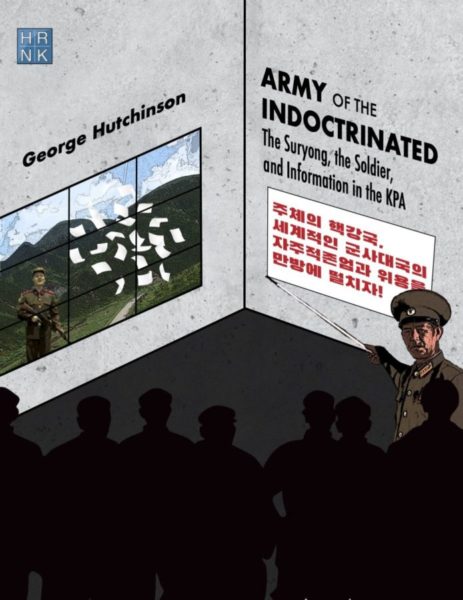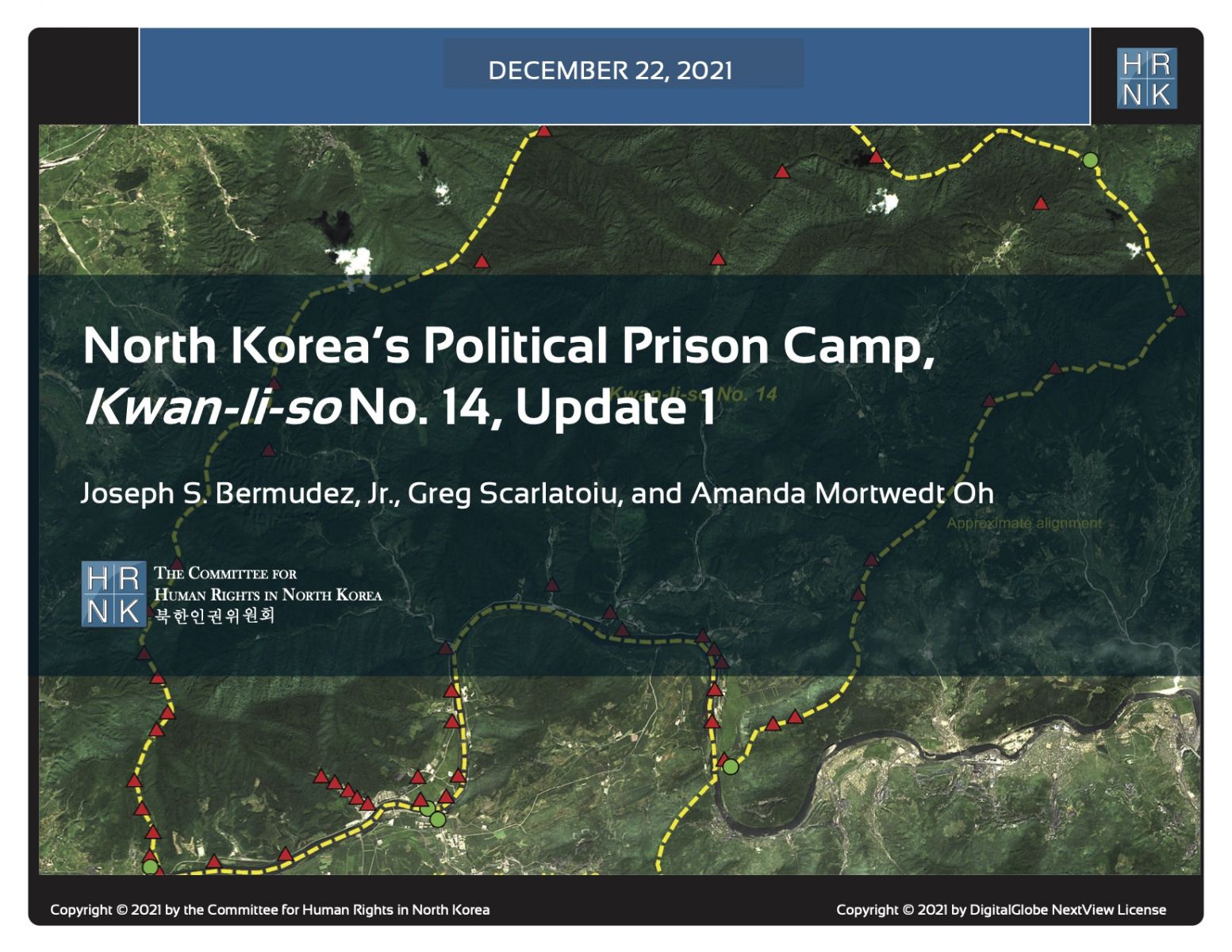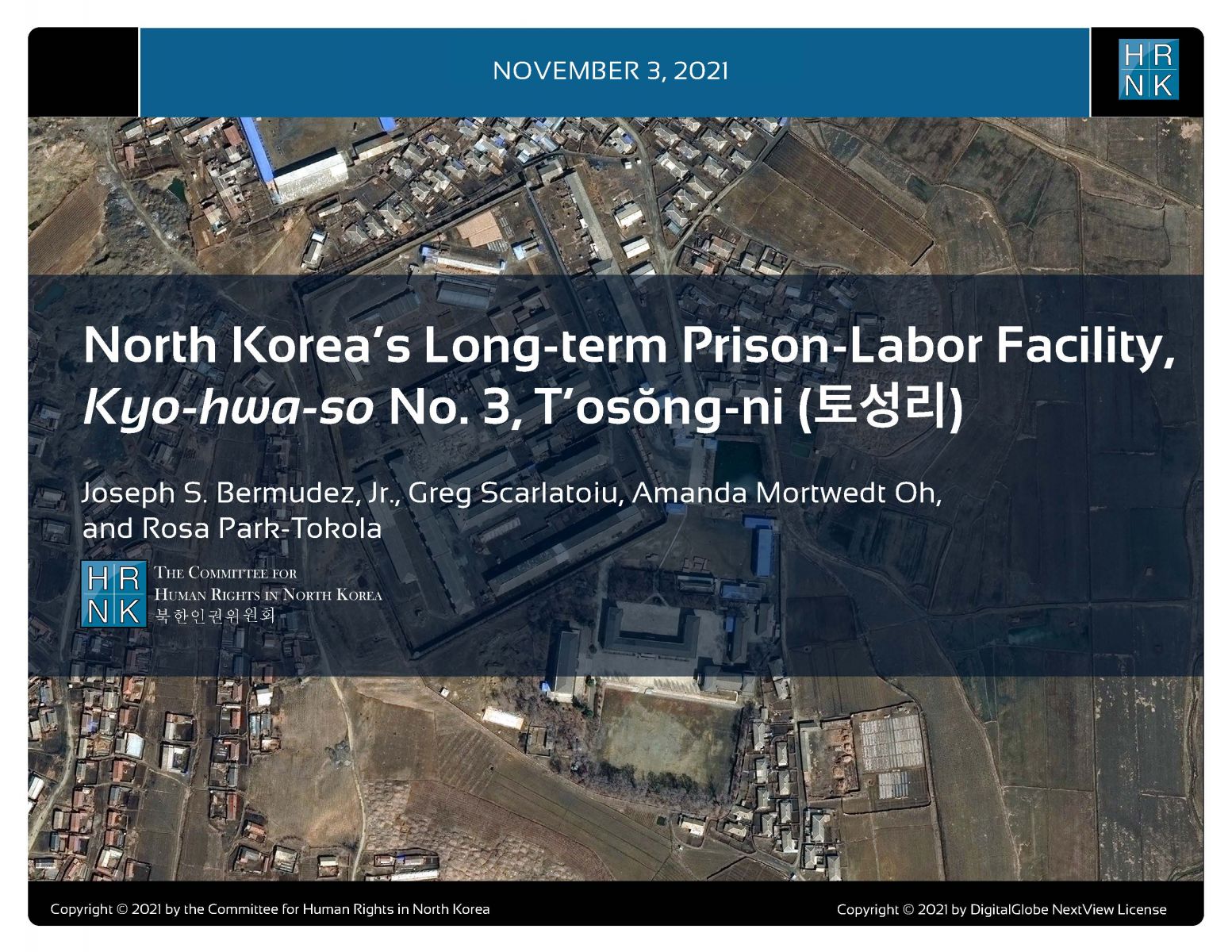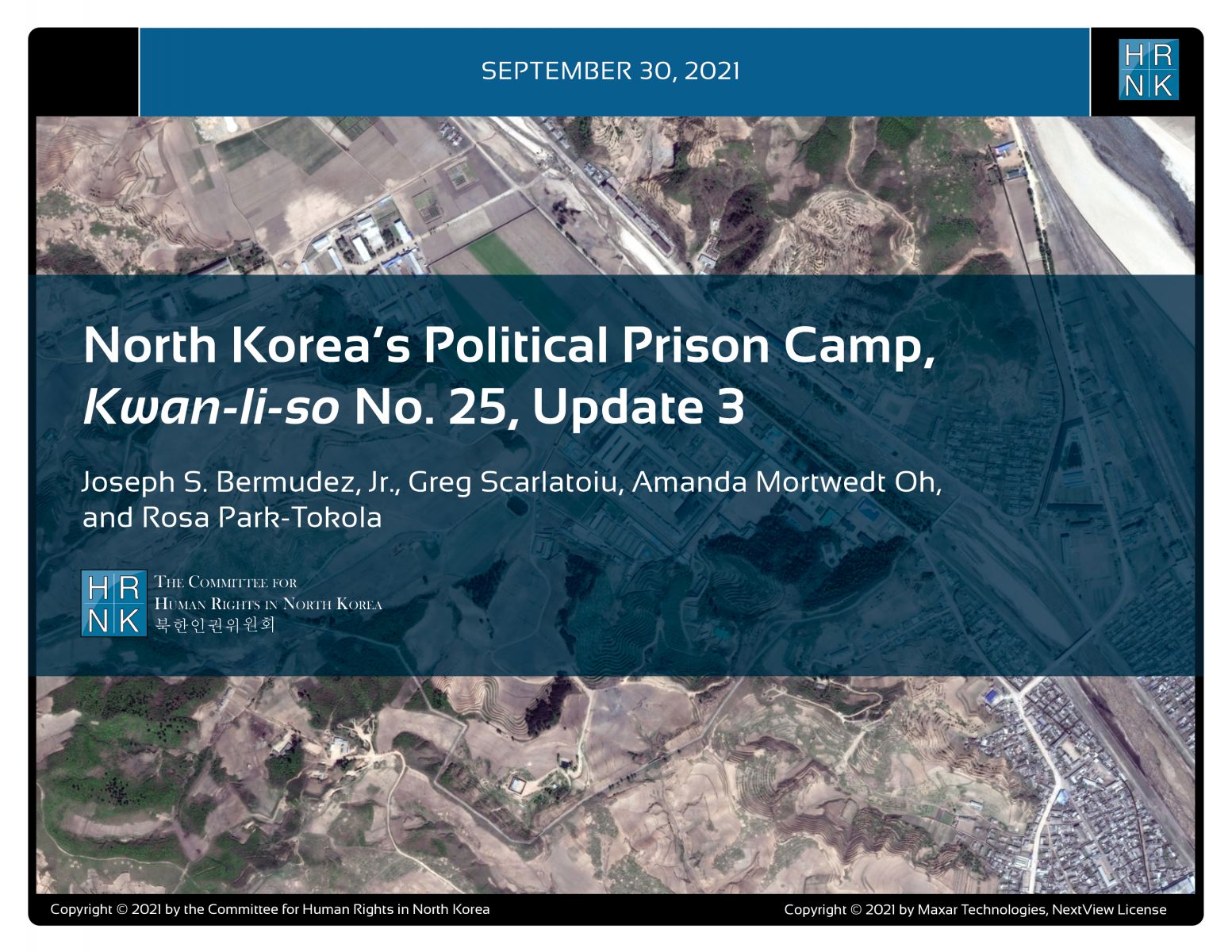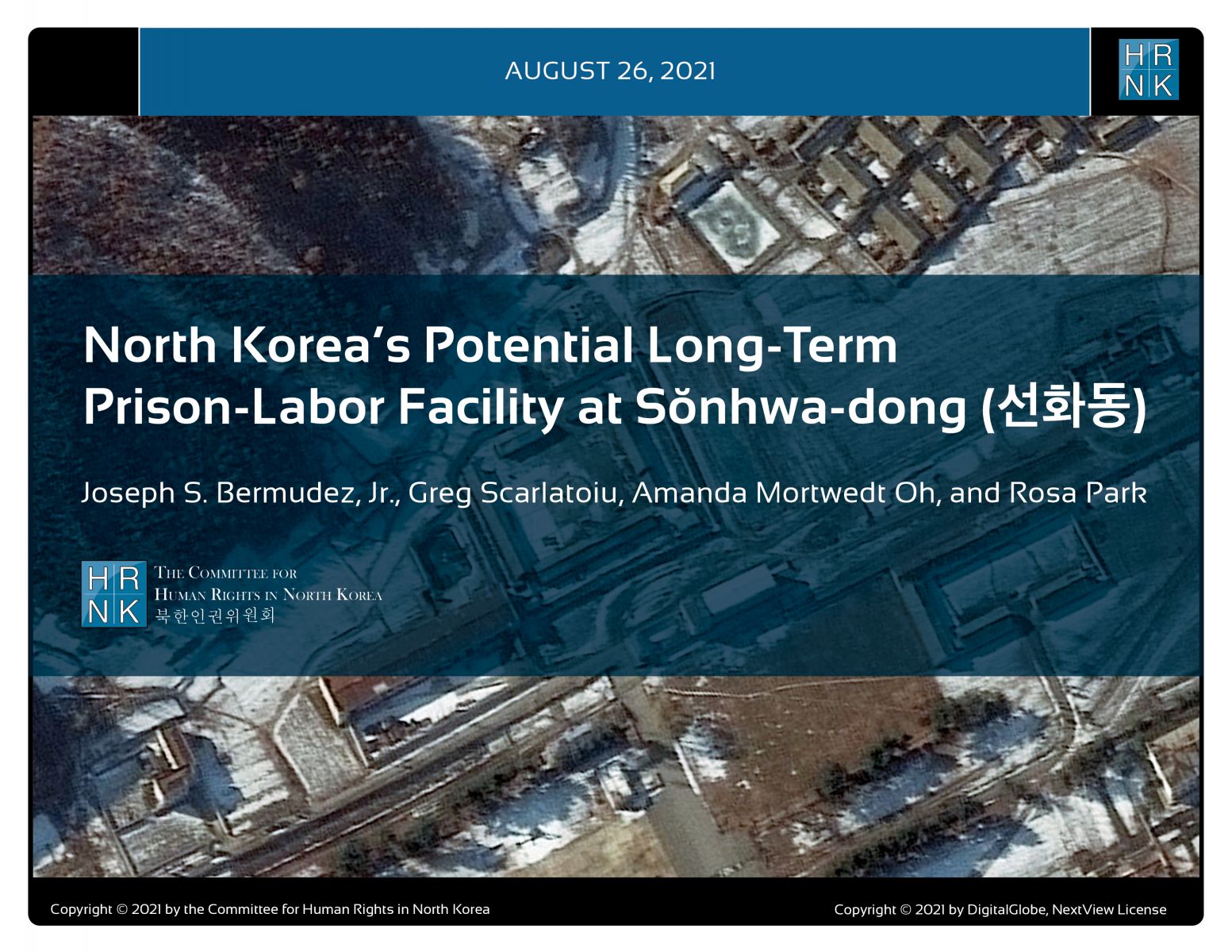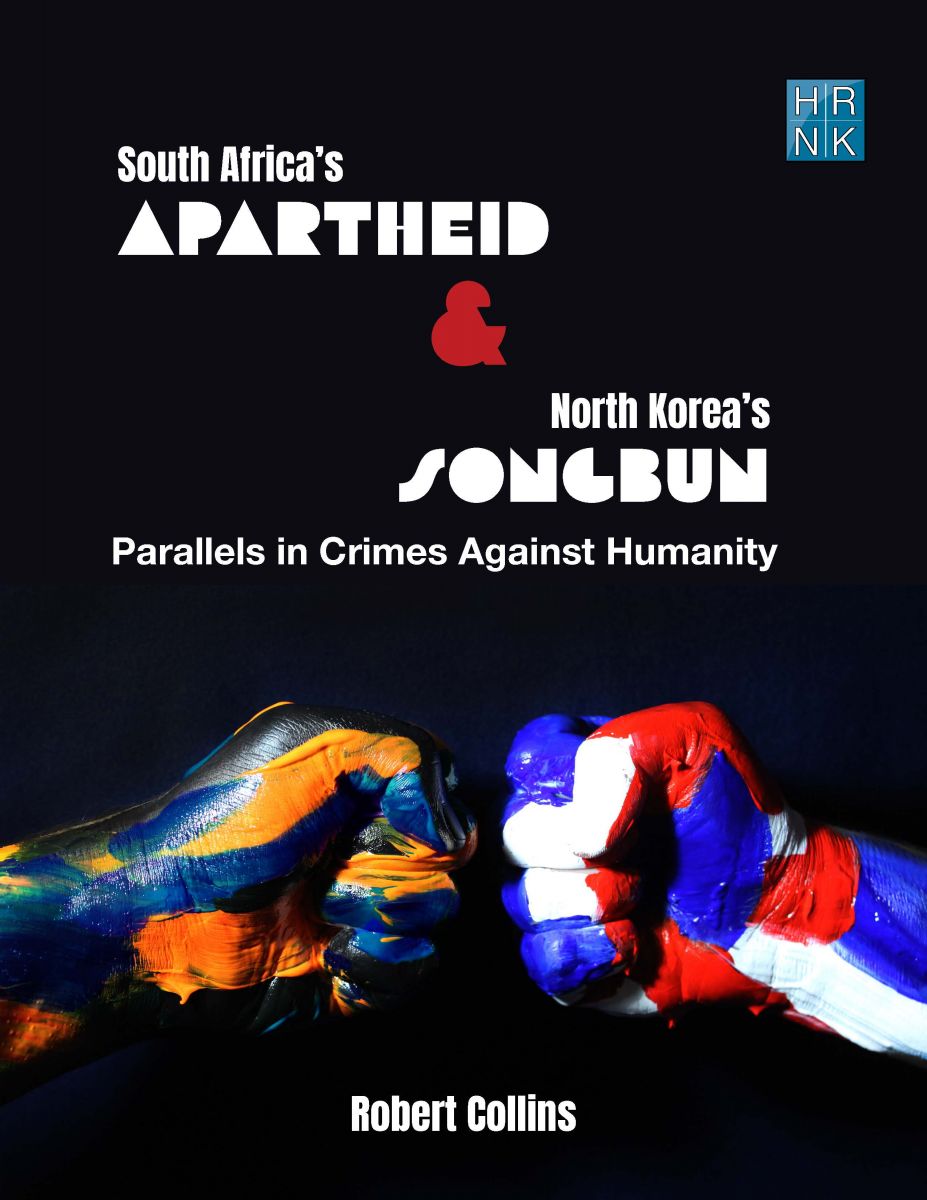| Album Title: | Greg Scarlatoiu on Pyongyang′s public executions ê·¸ë ‰ 스칼ë¼íŠœ ë¶í•œì¸ê¶Œìœ„ì› |
| Date: | May 14, 2015 |
| Location: | Arirang News |
| Description: | And the gruesome public execution is again... drawing attention to the regime′s rampant human rights violations. Arirang News′ Hwang Sungï¼hee turned to Greg Scarlatoiu , executive director of the Committee for Human Rights in North Korea, for his insight on the issue. North Korea is executing its senior officers in the most gruesome way, according to Greg Scarlatoiu, executive director of the Committee for Human Rights in North Korea. ″You are talking about an execution by ZPUï¼4 antiï¼aircraft machine gun. If you are talking about a person being hit by automatic fire, by 50ï¼caliber rounds, you are literally talking about bodies being pulverized, obliterated, turned into pink mist.″ Last month, Scarlatoiu released the firstï¼ever satellite images of a public execution of roughly 10 senior North Korean officers at Kanggun shooting range. He calls the killings a clear human rights violation, but adds the highï¼level executions could help bring about a change in the regime. ″Remember, this is, after all, a Confucian culture. Having something left, having a body, is very important. But they are simply obliterated. Every trace, any trace, that this person ever existed is eliminated. Now certainly these executions have had a lot of coverage, so I believe that this will indeed result in enhanced awareness internationally.″ What′s behind the brutality, says Scarlatoiu, is the young North Korean leader′s insecurity. Noting Pyongyang′s ties with Beijing have suffered after the execution of Jang Songï¼thaek who was the North′s point man on China he says the recent execution of defense chief Hyon Yongï¼chol may hurt relations with Russia. Hyon was the point man on Moscow, and even met with the Russian president last year. If those factors cause the situation to deteriorate, Scarlatoiu foresees more gruesome killings that could eventually shake up the entire regime. ″For this reason, the regime continues to be unstable and, unfortunately, as long as the regime continues to be unstable, the supreme leader, who also happens to be quite insecure, will be very tempted to continue with this gruesome practice and with these executions.″ ″Could the constant purges and executions in turn destabilize the Kim Jongï¼un regime?″ ″We are coming to the realization that the highestï¼ranking officials of North Korea are also victims of human rights violations. I wonder, wouldn′t those same elites of North Korea start wondering about their own survival? If even the most loyal of the loyalists, who have served the Kim family for decades, are not safe, then who is?″ Hwang Sungï¼hee, Arirang News. |
This is the first satellite imagery report by HRNK on a long-term political prison commonly identified by researchers and former detainees as Kwan-li-so No. 18 (Pukch'ang). This report was concurrently published on Tearline at https://www.tearline.mil/public_page/prison-camp-18.
To understand the challenges faced by the personnel who are involved in North Korea’s nuclear program, it is crucial to understand the recruitment, education, and training processes through the lens of human rights. This report offers a starting point toward that understanding. North Korea’s scientists and engineers are forced to work on the nuclear weapons program regardless of their own interests, preferences, or aspirations. These individuals may be described as “moder
In this submission, HRNK focuses its attention on the following issues in the DPRK: The status of the system of detention facilities, where a multitude of human rights violations are ongoing. The post-COVID human security and human rights status of North Korean women, with particular attention to sexual and gender-based violence (SGBV). The issue of Japanese abductees and South Korean prisoners of war (POWs), abductees, and unjust detainees.
This report provides an abbreviated update to our previous reports on a long-term political prison commonly identified by former prisoners and researchers as Kwan-li-so No. 25 by providing details of activity observed during 2021–2023. This report was originally published on Tearline at https://www.tearline.mil/public_page/prison-camp-25.
This report explains how the Kim regime organizes and implements its policy of human rights denial using the Propaganda and Agitation Department (PAD) to preserve and strengthen its monolithic system of control. The report also provides detailed background on the history of the PAD, as well as a human terrain map that details present and past PAD leadership.
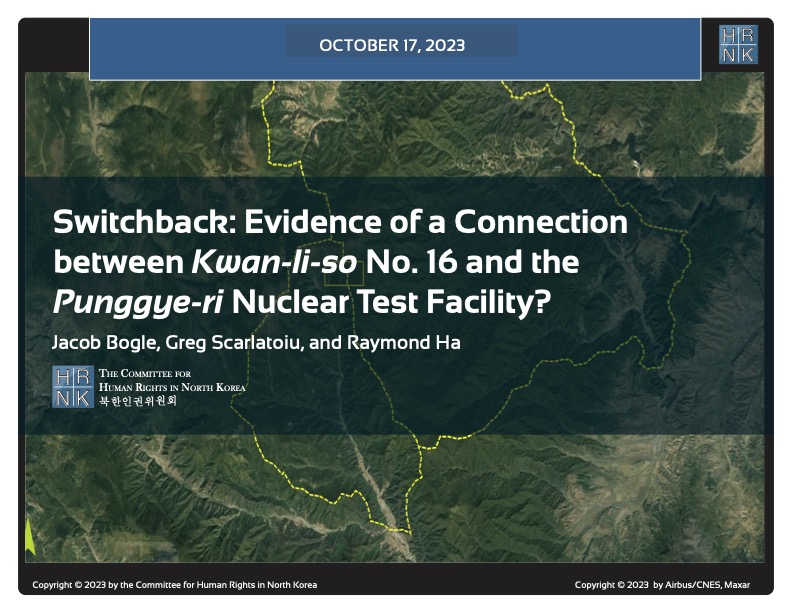
HRNK's latest satellite imagery report analyzes a 5.2 km-long switchback road, visible in commercial satellite imagery, that runs from Testing Tunnel No. 1 at North Korea's Punggye-ri nuclear test facility to the perimeter of Kwan-li-so (political prison camp) no. 16.
This report proposes a long-term, multilateral legal strategy, using existing United Nations resolutions and conventions, and U.S. statutes that are either codified or proposed in appended model legislation, to find, freeze, forfeit, and deposit the proceeds of the North Korean government's kleptocracy into international escrow. These funds would be available for limited, case-by-case disbursements to provide food and medical care for poor North Koreans, and--contingent upon Pyongyang's progress
For thirty years, U.S. North Korea policy have sacrificed human rights for the sake of addressing nuclear weapons. Both the North Korean nuclear and missile programs have thrived. Sidelining human rights to appease the North Korean regime is not the answer, but a fundamental flaw in U.S. policy. (Published by the National Institute for Public Policy)
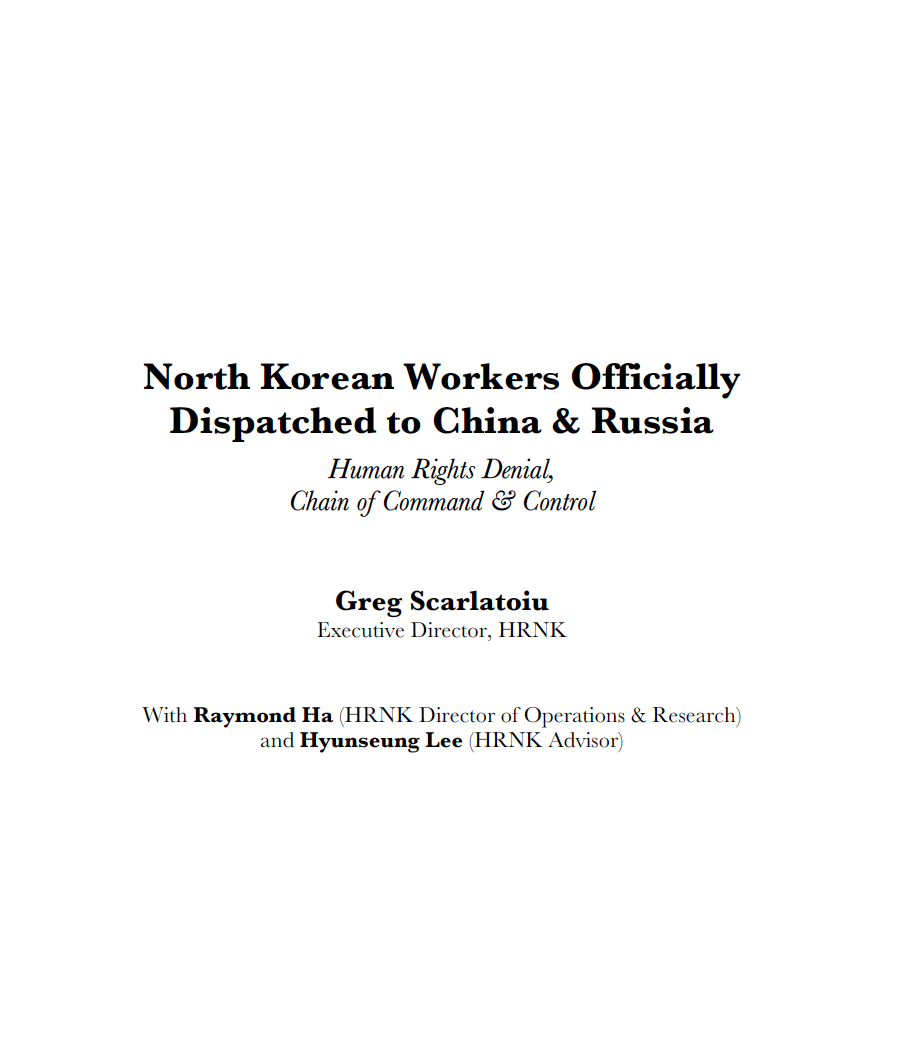
North Korea’s forced labor enterprise and its state sponsorship of human trafficking certainly continued until the onset of the COVID pandemic. HRNK has endeavored to determine if North Korean entities responsible for exporting workers to China and Russia continued their activities under COVID as well.
George Hutchinson's The Suryong, the Soldier, and Information in the KPA is the second of three building blocks of a multi-year HRNK project to examine North Korea's information environment. Hutchinson's thoroughly researched and sourced report addresses the circulation of information within the Korean People's Army (KPA). Understanding how KPA soldiers receive their information is needed to prepare information campaigns while taking into account all possible contingenc
This report is part of a comprehensive long-term project undertaken by HRNK to use satellite imagery and former prisoner interviews to shed light on human suffering in North Korea by monitoring activity at political prison facilities throughout the nation. This is the second HRNK satellite imagery report detailing activity observed during 2015 to 2021 at a prison facility commonly identified by former prisoners and researchers as “Kwan-li-so No. 14 Kaech’ŏn” (39.646810, 126.117058) and
This report is part of a comprehensive long-term project undertaken by HRNK to use satellite imagery and former prisoner interviews to shed light on human suffering in North Korea by monitoring activity at civil and political prison facilities throughout the nation. This study details activity observed during 1968–1977 and 2002–2021 at a prison facility commonly identified by former prisoners and researchers as "Kyo-hwa-so No. 3, T'osŏng-ni" and endeavors to e
This report is part of a comprehensive long-term project undertaken by HRNK to use satellite imagery and former detainee interviews to shed light on human suffering in the Democratic People’s Republic of Korea (DPRK, more commonly known as North Korea) by monitoring activity at political prison facilities throughout the nation. This report provides an abbreviated update to our previous reports on a long-term political prison commonly identified by former prisoners and researchers as Kwan-li-so
Through satellite imagery analysis and witness testimony, HRNK has identified a previously unknown potential kyo-hwa-so long-term prison-labor facility at Sŏnhwa-dong (선화동) P’ihyŏn-gun, P’yŏngan-bukto, North Korea. While this facility appears to be operational and well maintained, further imagery analysis and witness testimony collection will be necessary in order to irrefutably confirm that Sŏnhwa-dong is a kyo-hwa-so.
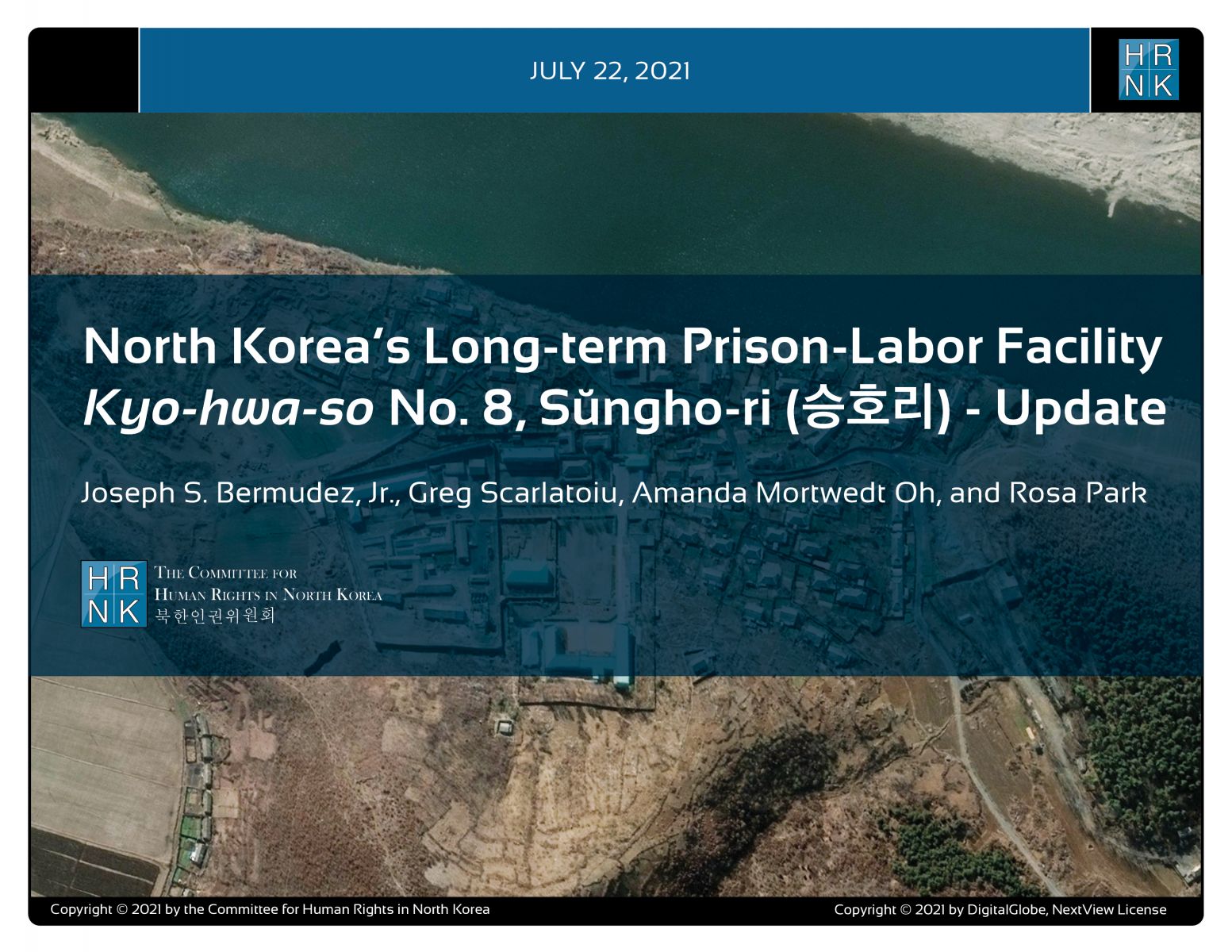
"North Korea’s Long-term Prison-Labor Facility Kyo-hwa-so No. 8, Sŭngho-ri (승호리) - Update" is the latest report under a long-term project employing satellite imagery analysis and former political prisoner testimony to shed light on human suffering in North Korea's prison camps.
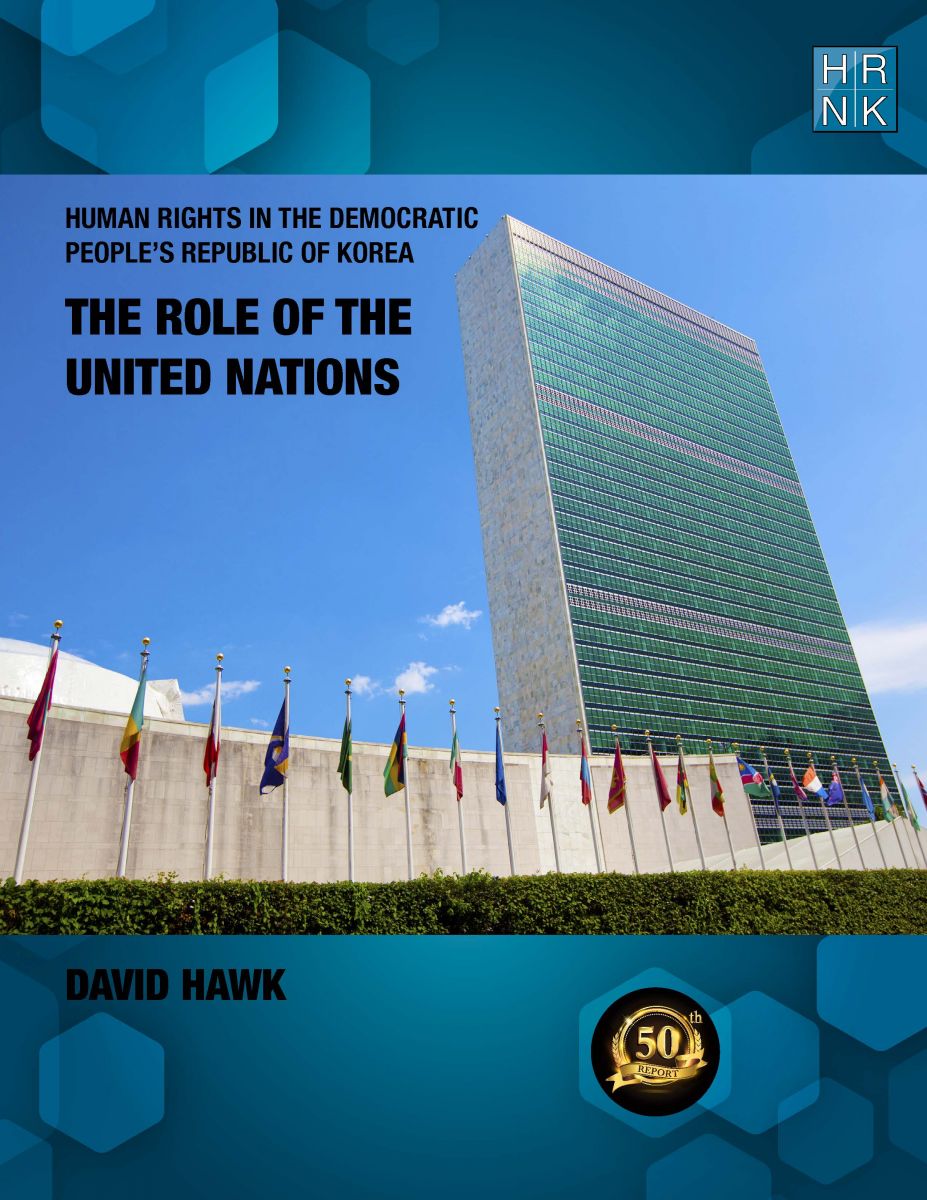
Human Rights in the Democratic Republic of Korea: The Role of the United Nations" is HRNK's 50th report in our 20-year history. This is even more meaningful as David Hawk's "Hidden Gulag" (2003) was the first report published by HRNK. In his latest report, Hawk details efforts by many UN member states and by the UN’s committees, projects and procedures to promote and protect human rights in the DPRK. The report highlights North Korea’s shifts in its approach
South Africa’s Apartheid and North Korea’s Songbun: Parallels in Crimes against Humanity by Robert Collins underlines similarities between two systematically, deliberately, and thoroughly discriminatory repressive systems. This project began with expert testimony Collins submitted as part of a joint investigation and documentation project scrutinizing human rights violations committed at North Korea’s short-term detention facilities, conducted by the Committee for Human Rights

